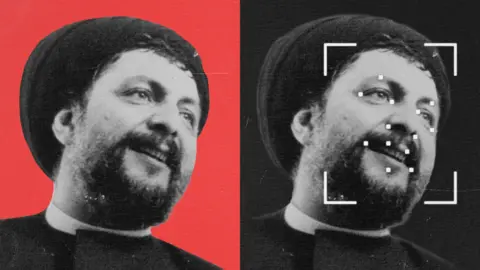A body discovered in a Libyan mortuary could finally unravel the decades-long mystery surrounding the disappearance of Musa al-Sadr, a prominent Shia cleric. Advanced facial recognition technology offers new hope for identification.
A computer scientist at a university in the north of England, Professor Hassan Ugail, is analyzing a digitized image of a decomposed face reported to resemble al-Sadr, who vanished in Libya in 1978. The original photo showed a corpse found in a secret mortuary, raising speculation it could belong to the charismatic cleric, whose disappearance has caused rumors and theories for nearly 50 years.
Al-Sadr's followers consider his absence symbolic and linked to the burdens of Shia Muslims in the region, sparking theories of murder, imprisonment, or his continuing existence. Describing emotional ties similar to those felt in high-profile political disappearances globally, the search for evidence has led to a complex investigation, including a brief imprisonment of journalists in Libya during research efforts.
Al-Sadr was known for advocating on behalf of the marginalized Shia community in Lebanon and was last seen seeking support from then-Libyan leader Muammar Gaddafi during increasing civil unrest in Lebanon. His absence not only impacted his direct followers but also shifted political dynamics in the broader Middle East.
The investigation intensified when Kassem Hamadé, a journalist who entered the mortuary in 2011, claimed to have seen a body resembling al-Sadr. This finding has rekindled interest in the cleric's fate, prompting an additional analysis using facial recognition algorithms that resulted in a high probability score linking the body to al-Sadr. However, without definitive DNA evidence, the mystery remains.
Historical narratives surrounding al-Sadr's life and influence add depth to the investigation, including speculations on foreign influence, political endorsements, and assertions of his potential impact on the Iranian Revolution. The key information regarding the body has been met with skepticism from political figures and family members seeking further evidence before confirming any conclusions.
This ongoing quest is rekindling interest in his origins, dedicated followers' faith, and the essential role of perception in shaping historical narratives that oscillate between belief, myth, and the pursuit of truth.
}


















